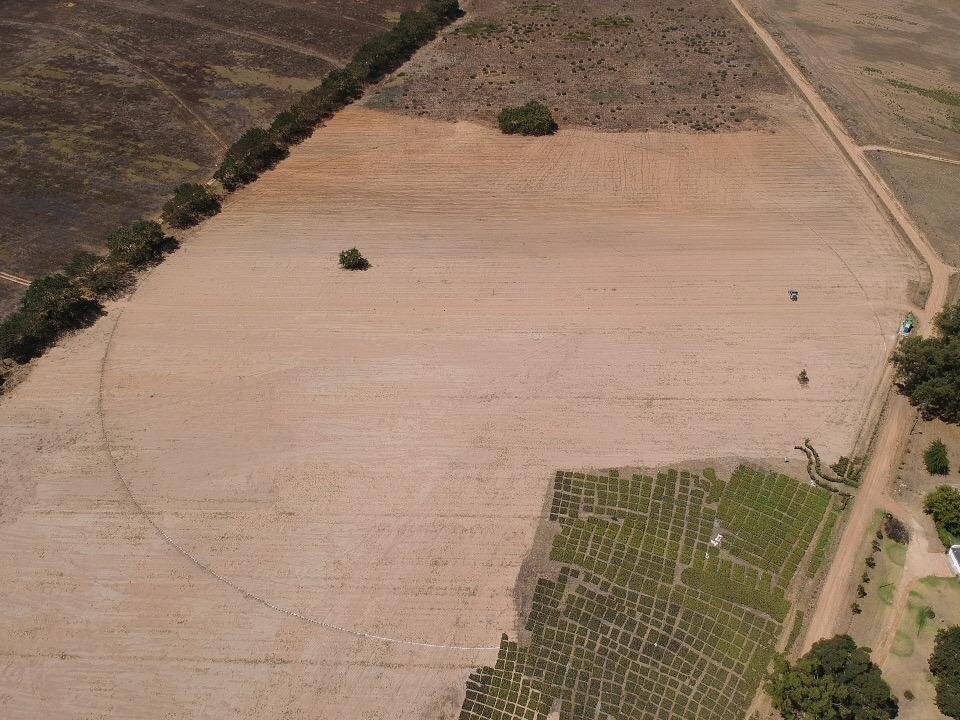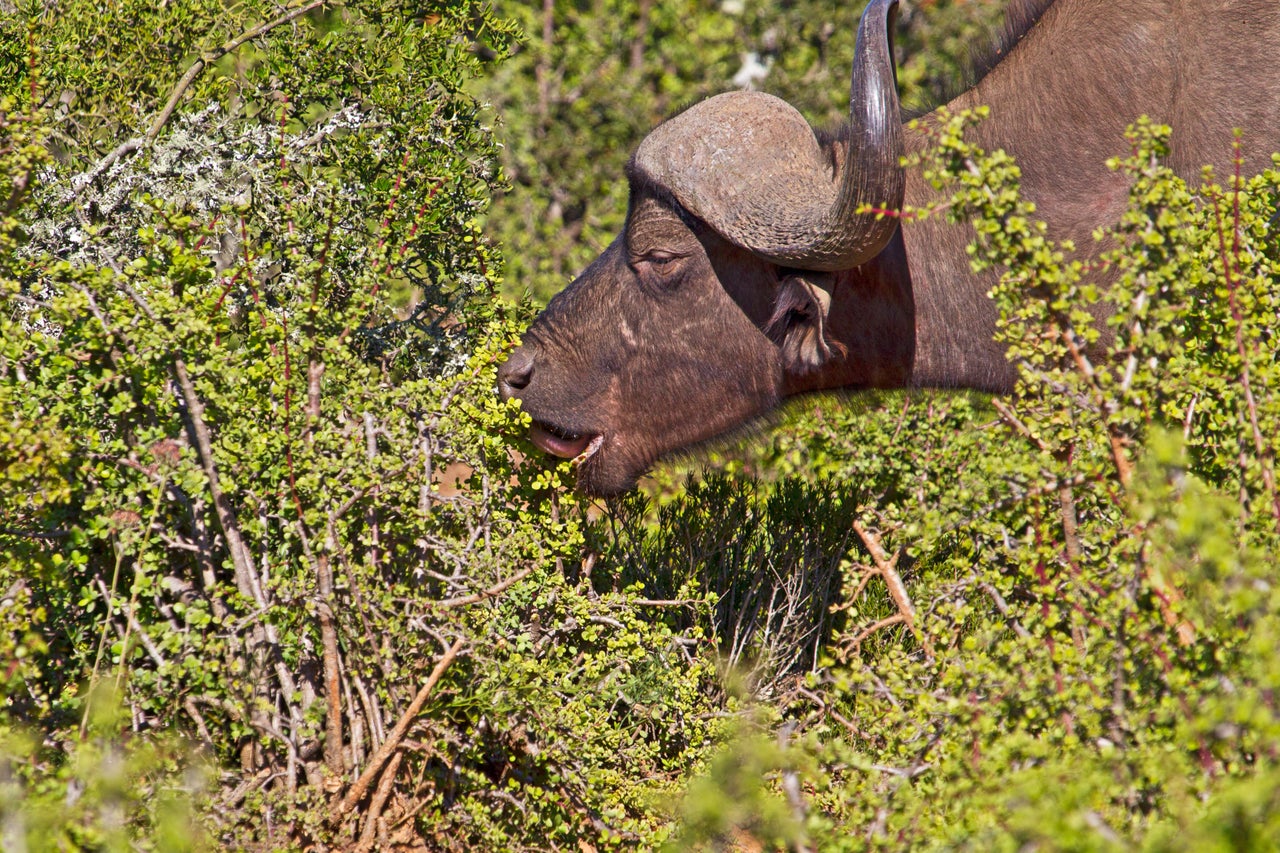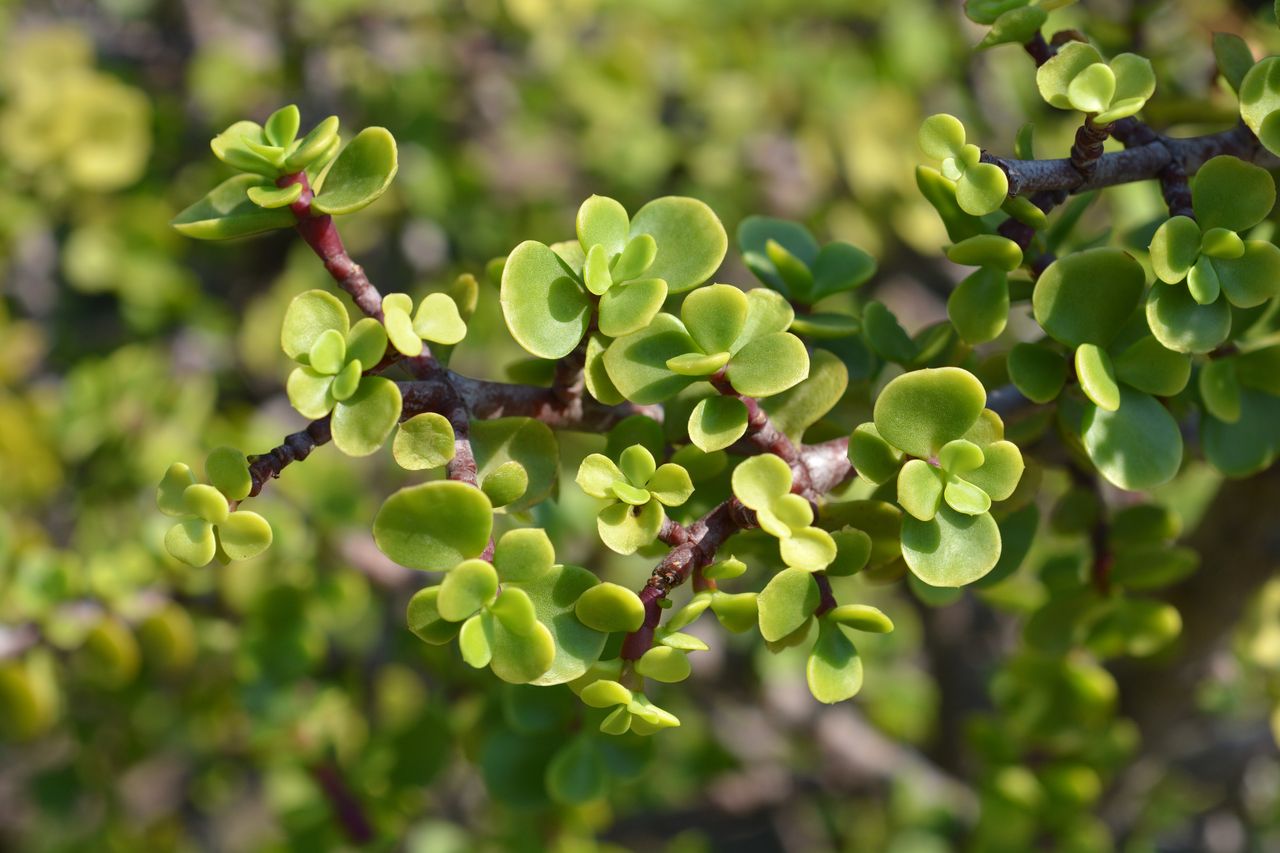Peter Shrimpton always wanted to build something that could be seen from space. With his latest project, the South African social entrepreneur believes he might just manage it. In the outskirts of his hometown of Stellenbosch, Shrimpton is overseeing the planting of a vast labyrinth that he says will eventually cover the same amount of land as Egypt’s Great Pyramid of Giza.
What Shrimpton is most excited about, however, is not the size of the labyrinth but what’s being used to grow it: hundreds of thousands of spekboom trees.
This succulent plant ― also called Portulacaria afra ― used to cover swaths of South Africa’s Eastern Cape before being nibbled to a fraction of its former glory by farmed goats and sheep. In recent months it has shot back to fame amid claims it is a carbon-busting miracle shrub with the potential to negate whole countries’ emissions.
“This is in actual fact a wonder plant,” said Shrimpton. He has been growing spekboom for three years via a network of growers in South Africa’s slums and selling them to individuals and companies wanting to reduce their carbon footprint. Eventually Shrimpton hopes to persuade the South African government to commit to planting a billion of them.

Shrimpton is not the only one obsessing over spekboom. The hashtag #SpekBoomChallenge has gone viral on social media, with people across South Africa pledging to plant 10 this year and urging others to follow. The city of Cape Town has promised to plant 5,000 spekboom during April, and shops have been giving them away for free. Just before Christmas, the banking group Investec gave each of its 5,200 South African staff a spekboom to “neutralize” their carbon emissions at work, urging them to pay it forward by giving cuttings to friends and family.
Meanwhile, the government is working up plans to restore a million hectares (2.5 million acres) of spekboom thicket ― roughly 170 times the size of Manhattan ― potentially creating work for thousands of people in the process.
Interest has also spread beyond South Africa. A U.K. couple this month launched The Spekboom Project, with the stated aim of removing half a million metric tons of CO2 from the atmosphere by persuading millions of British people to keep one as a houseplant.
But is spekboom all it’s cracked up to be?
Spekboom is attractive, virtually pest free and very good at absorbing CO2 relative to the amount of water it uses, said Jan Vlok, a botanist and research associate with Nelson Mandela Metropolitan University in Port Elizabeth, South Africa. Once established, it also drops leaves that turn into mulch and help retain water in the soil after a storm, making it particularly valuable for ecosystem restoration in the arid zones to which it is indigenous, he said.
Existing data suggests a hectare of restored spekboom in dry areas will absorb up to 15.4 metric tons (17 U.S. tons) of CO2 annually ― slightly more than the average American’s annual carbon footprint ― an impressive figure, said Vlok.

But he worries that the current hype around spekboom goes beyond the science, describing a widely circulated claim that a hectare of spekboom can absorb 10 times more CO2 than a hectare of the Amazon rainforest as a “ridiculous” comparison. “It creates this misconception that it’s OK to chop down the Amazon rainforest ― you just have to plant spekboom ― which is absolute nonsense.”
Such hype could be harmful, Vlok said: “In the long term it’s going to give spekboom restoration a very bad name, where actually it’s doing very good work when it’s done in the right way in the right place.”
Vlok is also wary of claims that individuals will be able to slash their own carbon footprint by planting spekboom at home. “Even if you have 100 plants, it’s simply not going to make you carbon neutral,” he said. And while people from the U.S. to Denmark have shown interest in planting spekboom, Vlok cautions that it is unlikely to be the most suitable plant outside of its natural area ― it hates frost and brackish soil, for example. “I would rather advise them to look for something in their own country,” said Vlok.
Even in South Africa, a narrow focus on spekboom planting could also bring unintended consequences, warned Sally Archibald, an environmental scientist at the University of the Witwatersrand, by email. Planting spekboom across South Africa’s natural grasslands and savannas, for example, would lead to a lot of carbon being lost from the soil. “Digging up natural veld [open, uncultivated landscape] to plant spekboom or any other tree will always be a carbon-costly thing to do,” she said.

Spekboom does best in dry areas of the thicket biome ― the shrubland and low forest of the Eastern Cape ― said Kath Smart, a postdoctoral researcher in ecosystem restoration at South Africa’s Rhodes University. Planting needs to be managed carefully, she said, because if planted too densely, for example, spekboom could push out other species by creating a canopy that overshadows plant life closer to the ground.
“I do think [spekboom] has a special role to play,” she said, but added, “it’s not the silver bullet, the panacea, that everyone is making it out to be.”
It’s hardly the first silver bullet idea to hit the climate change debate. From planet-saving bamboo to the algae that will power the world, we’ve been hearing about miracle fixes for decades.
Spekboom’s growing popularity ties in with the wider interest in nature-based solutions to climate change, seen most recently with a sweep of tree-planting pledges, including Donald Trump’s promise to help plant a trillion trees. But while this trend may help spur other actions, the idea that one simple plant can solve all our problems is misguided, experts say.
“So many of us are feeling so terrified about climate change, I can see why people are thinking, ah, we can just do this.”
- Alice Bell, co-director of U.K. climate charity Possible
In an age of climate doom, it is understandable that people turn to simple-sounding solutions, said Alice Bell, co-director of U.K. climate charity Possible. “So many of us are feeling so terrified about climate change, I can see why people are thinking, ah, we can just do this,” she said.
Nature-based solutions, like mass tree planting, may have particular appeal, she added, because they lack the “ick factor” of, say, spraying chemicals into the sky to block the sun’s rays and lower temperatures, or building nuclear power stations.
But the danger of the miracle framing is complacency, said Bell ― a belief that we can offset our way out of the climate crisis; or that small personal actions will be sufficient, when in fact we need to make deep and widespread changes, including “cutting our emissions drastically.”
In the case of spekboom, Shrimpton argues that the buzz around the plant can spur wider change by acting as a “catalyst for mobilizing people to think about their carbon footprint.”
Whether this is likely is still open to debate, said Stuart Capstick, a psychologist at Cardiff University in Wales.
There is research showing that when individual actions are perceived as effective, there is a decline in support for national policies to tackle climate change. One 2017 study in Japan, for example, found that when people were asked to report on the energy-saving measures they were taking at home, support for a carbon tax fell.
But there is also evidence that the opposite can happen, said Capstick — that when the conditions are right, taking one eco-friendly action triggers others. A meta-analysis of studies on environmental interventions published in Nature Sustainability, found that this was most likely when the action was seen as “inherently important or interesting.”
Feeling like your efforts go beyond an individual or household level, and are part of a wider community effort, is important, said Capstick. Since the world is still burning fossil fuels on a massive scale, a huge and concerted societal push for system change is required to tackle climate change.
This is the sentiment Joshua and Alisa Millar hope to create with The Spekboom Project, which plans to direct profits from houseplant sales into rewilding schemes. Joshua said they wanted to get people around the U.K. involved in something positive, beyond posting gloomy environmental stories on Facebook.
“We know it’s not going to fix the problem,” he said. “But it’s one idea that’s in the right direction. And collectively all these ideas and projects will make a difference.”
For more content and to be part of the “This New World” community, follow our Facebook page.
HuffPost’s “This New World” series is funded by Partners for a New Economy and the Kendeda Fund. All content is editorially independent, with no influence or input from the foundations. If you have an idea or tip for the editorial series, send an email to thisnewworld@huffpost.com.
